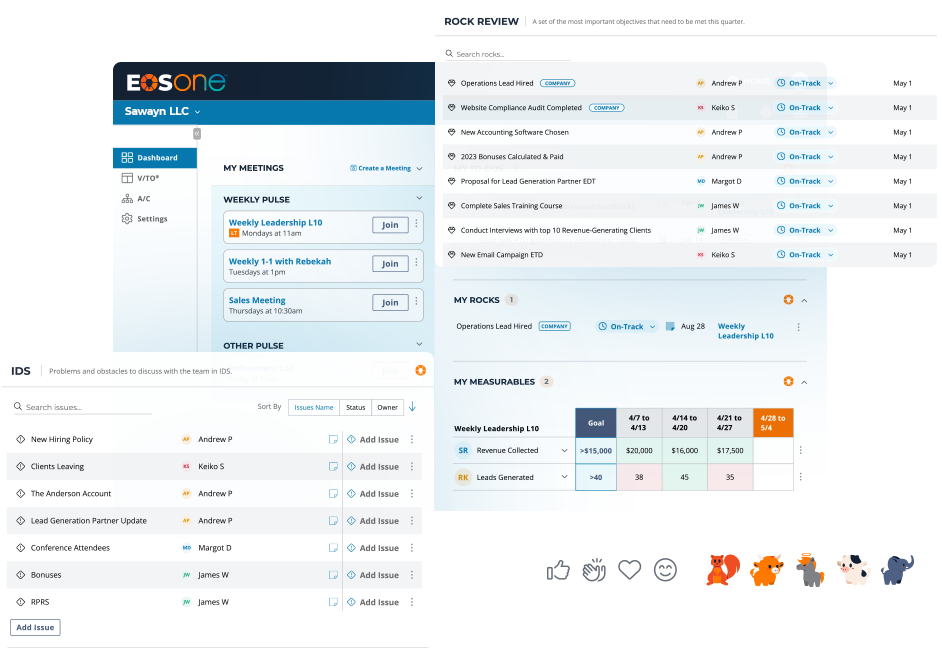
If you’re like most small to medium-sized entrepreneurial companies, you’ve probably tried to visually display how your company is structured or organized. So what’s the best way to do that – with an accountability chart or an organizational chart? What’s the difference?
Organizational charts are focused on who reports to who, but they typically don’t address one of the major issues most companies struggle with: a lack of clarity around what the major functions of the organization are, and who is accountable for what.
Accountability charts provide clarity about who owns the major functions of an organization and identifies the primary roles and responsibilities for which they are accountable.
Clarifying Accountability Improves Efficiency
Take a look around your company and ask yourself:
- Is your team confused about who is responsible for what?
- How much time is wasted because of this accountability knowledge gap?
- How many goals don’t get accomplished on time because no one is driving them?
It’s vitally important in all companies to clarify this accountability. Whether there is a customer service problem or there is no toilet paper in the facility – you’ll save time and energy if your employees aren’t forced to guess who owns the problem. Who decides whether to fund a major new project – the CFO (if one exists) or the owner, or both? Who owns managing the outsourced website design team – the marketing director or the engineering manager? Who decides what commission rates to pay – the VP of Sales or the CFO or the Owner?
How to Create Your Accountability Chart
In this video, EOS Worldwide Visionary Mark O’Donnell describes the power of the Accountability Chart and how to structure your organization effectively:
Remember, there should be only one owner for all major responsibilities and everyone should understand who owns what. After all, if everyone is responsible then no one is responsible.
EOS ONE™
ONE VISION. ONE SYSTEM. ONE TEAM.™
Get everything you need to run your business better and faster on EOS® with the all-in-one software for communicating your vision, driving Traction®, and accelerating team health.
Exclusively from the makers of EOS.




